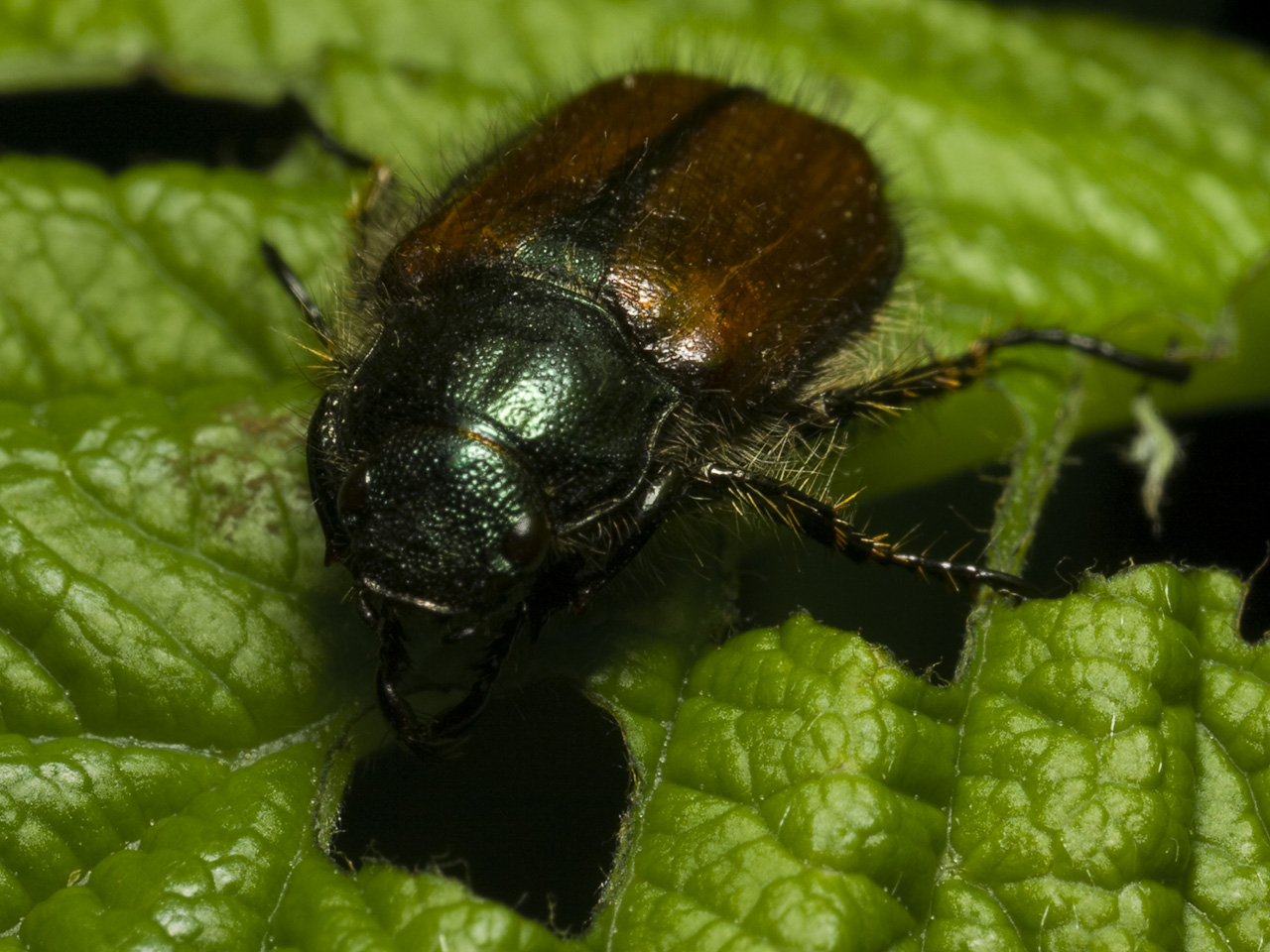
Phyllopertha horticola · grikinukas
- garden chafer, garden foliage beetle
- Gartenlaubkäfer
- grikinukas, sodinis grambuoliukas
- dārzvabole
- ogrodnica niszczylistka
This rather common species is widely widespread in Europe and in Asia, east to Siberia and Mongolia. In the north of Europe their distribution reaches the middle Fennoscandia and includes the British Isles, in southern Europe it mainly occurs in the mountains. It is the only European representative of the genus Phyllopertha.
These beetles inhabit bushes, hedgerows, woodland edges, meadows and fields. They also live in parks and gardens, hence the common name of garden chafer. Phyllopertha horticola is approximately 8.5–11 mm in size. They have chestnut-brown wing casings which are covered with a long upright pubescence. On each elytron run six longitudinal bands of small dots. Head and thorax are finely granulated. Head, thorax and legs are shiny dark green or bluish. The underside of the body is also green. The antennas are very short and end in a fan-like group of three lamellae.
The adult beetle can be seen from April to July. Adults live for up to eight weeks. Females lay 15-25 eggs in the ground at a depth of 10–15 cm. After a period of 4–6 weeks they hatch and larvae grow up to 2 cm in length and develop in the soil. Larvae take 2–3 years to develop. They overwinter in the ground. In April, they migrate to deeper soil layers to turn into a chrysalis and hatch in May into an imago, allowing an adult insect to emerge. The males swarm first; the females follow with a few days delay.
Beetles damage leaves, flowers and developing fruits of many deciduous trees and shrubs (mainly oak leaves, hazelnut and birch leaves, as well as cherry and rose petals). Larval stages will feed on roots of clover, grasses and crops (cereals, cabbages, cucumbers, beets, peas).
Kūnas 8,5-11 mm ilgio, ovalus, žvilgantis, plaukuotas. antsparniai geltonai rudi arba rudi. Galva, priešnugarėlė, skydelis – juodai žali arba tamsiai mėlyni. Vabalai skraido gegužės – birželio mėn. šiltomis saulėtomis dienomis. Patelės kiaušinius deda į dirvą. Lervos minta įvairių žolinių ir sumedėjusių augalų šaknimis. Vystymosi ciklas trunka vienerius metus. Lietuvoje labai dažnas.
‥